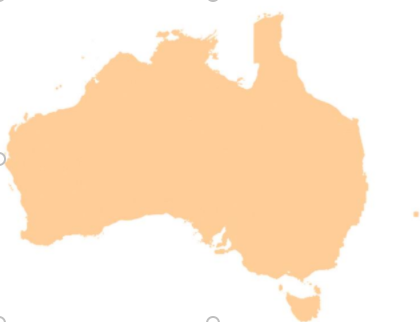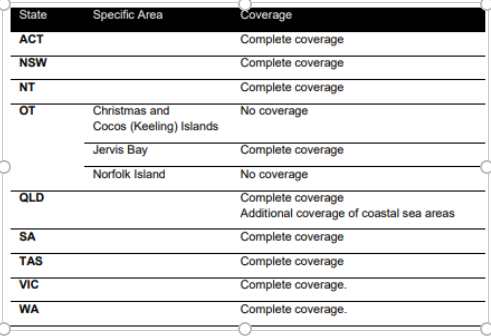Buildings
Metadata Statement
Metadata for the Metadata
- Metadata Identifier: Buildings
- Scope: Buildings Dataset
- Time: 02/02/2022
- Responsible Party:
- Contact Point: Michael Dixon
- Organisation: Geoscape Australia
- Position: Chief Data Officer
- Telephone: +61 2 6260 9000
- Delivery point: Unit 6, 113 Canberra Ave Griffith ACT 2603 Australia
- Access, Use, Security: Information supplied within the metadata may not be copied without referencingGeoscape Australia.
- Standard: ISO 19115-1 based on the ANZLIC/ICSM Metadata Working Group https://www.icsm.gov.au/sites/default/files/Poster%20-%20Best%20Practice%20for%20Datasets%20Metadata%20v1.pdf
- Language: English
Resource Metadata
- Title: Buildings
- Identifier: Buildings
- Abstract: Buildings is a national digital dataset representing buildings for each State and Territory in Australia. The dataset is comprised of four layers which represent the outlines of building objects, related building characteristics and linkages to related foundational data themes.
- Purpose: The purpose of Buildings is to spatially represent building related features for use by industry and government in geographic information systems, visualisations, engineering modelling, and for the derivation of analytics.
- Time: The buildings dataset was originally released in 2016 and is typically published with updates four times a year.
- Responsible Party:
- Contact Point: Geoscape Support
- Organisation: Geoscape Australia
- Telephone: +61 2 6260 9000
- Facsimile: +61 2 6260 9001
- Delivery point: Unit 6, 113 Canberra Ave Griffith ACT 2603 Australia
- Access, Use Security
- Legal Constraints: The dataset is available under licence from Geoscape Australia and authorised partners. Data usage is in accordance with the Geoscape Copyright Notice and Disclaimer available https://geoscape.com.au/legal/data-copyright-and-disclaimer/
- Security Constraints: N/A
- Use Limitations: The buildings dataset is a representation of building objects and related characteristics. Remotely sensed inputs including imagery sources and elevation models have absolute and relative positional accuracy limitations and so precise navigation with respect to represented objects may require additional qualification.
- Releasability: The dataset should only be distributed in accordance with the licence under which it has been accessed.
- Extents:

West Bounding Longitude: +100 East Bounding Longitude: +160

- Reference System:
- Spatial Reference System: GDA94 and GDA2020
- Vertical Datum: The Australian Height Datum (AHD)
- Temporal Reference System: Gregorian calendar
- Language: English
- Format: The data is made available in the File Geodatabase, GeoJSON, ESRI Shapefile and MapInfo TAB formats, other formats may be available through distribution partners.
- Additional Information: A Product Guide for the dataset is available from Geoscape Australia. Release Reports are made available at the time product updates are released.
- Linked Services & applications: Related products and services are available via www.geoscape.com.au
- Status: Complete
- Lineage:
- The buildings theme (buildings layer) consists of digital representations of the roof outline of a building. Buildings have been digitised from remotely sensed imagery using a combination of automated and manual processes to identify, extract and orthogonalise objects resembling a building structure greater than 9m2. The process also determines building attributes including roof materials, the presence of solar panels and the presence of swimming pools. Image quality factors including currency, capture geometry, and applicable weather conditions influence the specific image which can be utilised for further processing. A suitable high-quality Digital Surface Model is constructed to assist with feature extraction.
Data quality and potential capture timelines will vary across Australia based on three categories. Each category has been developed based on several factors defined by the population distribution (categorised based on population size), industrial/commercial activities, the probability of natural events (e.g. flooding) and the image source.
- Urban (satellite source) – areas with a population greater than 200, or with significant industrial/commercial activity in a visual assessment, digitised from satellite imagery
- Urban (aerial source) – areas with a population greater than 200, or with significant industrial/commercial activity in a visual assessment, digitised from aerial imagery.
- Rural – all other areas.
Linkages from the Buildings theme to other Geoscape data themes (specifically G-NAF, Cadastre, Property, Localities, ABS ASGS, Geoscape Planning) are created through internal production processes.
Building change management including process which describe how adds, retires and updates are applied to the dataset are described in the associated product guide.
- Associated Resource: Further product documentation including a Product Guide and a Release Report are published at the time of a dataset update.
- Maintenance: The Buildings dataset is continuously maintained with dataset updates published quarterly.
- Storage: The Buildings dataset is managed by Geoscape Australia.
- Distribution: The dataset is available from multiple locations .
- From Geoscape Australia and authorised re-sellers;
- Organisation: Geoscape Australia
- Telephone: +61 02 6260 9000
- Mailing address: Unit 6, 113 Canberra Ave Griffith ACT 2603 Australia
- Authorised Resellers: Available via https://geoscape.com.au/partners/
- From Geoscape Australia and authorised re-sellers;
- Topic Category: Dataset metadata
- Keywords: Buildings, buildings datasets, buildings file, solar panels, swimming pools, planning data, address linkages, land parcel linkages, built environment, building height.